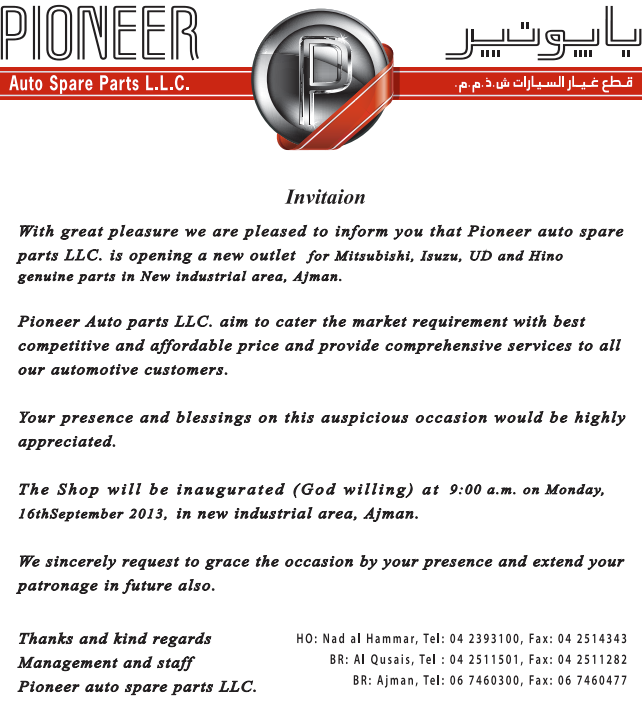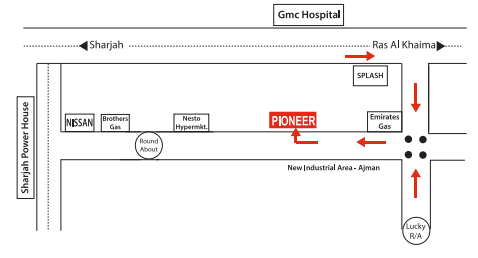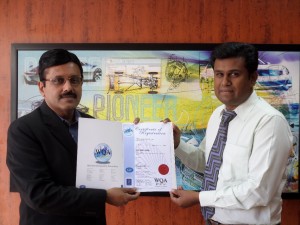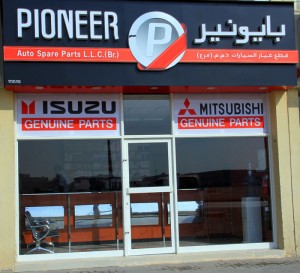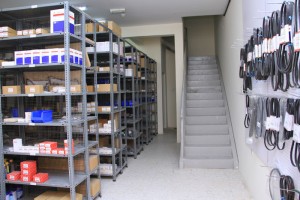Category Archives: News
Tyre Safety Tips – Tyre Care and Maintenance
Tyre Safety Tips – Tyre Care and Maintenance
Did you know that you are not insured when driving on bad condition tyres?
If you are involved in an accident and it turns out that you have been driving around on tyres with a tread depth lower than standard limit, you could find yourself forking out a lot of money on repairs and fines. Worn tyres significantly impede the performance of your car – low tread depths reduce the effectiveness of braking, steering and acceleration, all of which are vital in staying safe. Let us check some of the important tyre safety tips.

Tyre Safety Tips & Tricks
Check Tread Depth
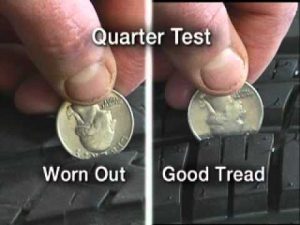
Tyre Tread Depth – Quarter Test – Tyre Safety Tips
The deeper the tread the more grip you will have when driving. Check the tread depth regularly either with a dedicated tread gauge or using the built-in tread wear indicator on your tyres. In European countries for summer passenger tyres, the figure is 1.6 mm while in several countries for certain winter models the reference is 4 mm. However, grip in wet conditions reduces significantly if your tread depth gets below 3mm. Your safety and mobility depend on a good level of tread depth because the tread grooves disperse water from underneath your tyre, helping maintain control.
You can do a simple coin test to check the tread depth, take a 20p and place it in-between the main grooves of the tyre. If you can see the outer band of the coin, the tyre may have insufficient tread depth. At this point, it is advised that you have your tyres checked over by a qualified mechanic.
Tyre Pressure
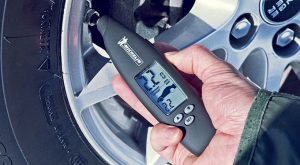
Tyre Pressure – Tyre Safety Tips
As tyres lose pressure, their safety, handling and fuel efficiency are adversely affected.
When a tyre is under-inflated, its contact patch with the road surface is concentrated towards the two outer edges of the tread, leading to rapid wear and reduced tyre life. Under-inflation also increases rolling resistance, meaning that more energy is needed to turn the wheel leads to increased fuel use. And under-inflation is the main cause of cracks which could cause blowout and lead to the loss of control of your vehicle.
Tires have been known to lose up to 1psi (pounds per square inch) every month, so check all tires, including your spare, once a month (or before a long trip).
Check your tyre pressure:
- When your tyres are cold
- Before long journeys
- When carrying heavy loads
How to Check Tyre Pressure?
- Purchase a trusted tyre Pressure Gauge.
- Check your tyres when it is “cold” – before you’ve driven or at least three hours after you’ve driven.
- Insert tyre pressure gauge into the valve stem on your tyre and measure the psi.
- Compare the measured psi to the psi found on the sticker inside the driver’s door of your vehicle or in owner’s manual. DO NOT compare to the psi on your tyre’s sidewall.
- If your psi is above the number, let air out until it matches. If below, add air until it reaches the proper number.
Wheel Alignment
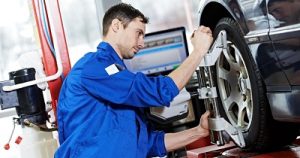
Wheel Alignment
It’s difficult to tell if your wheels and axles are correctly aligned while driving. But if your vehicle’s suspension geometry is incorrect, its handling may be altered and your safety compromised. If your tyre has come into contact with a solid object, such as a kerb or pothole, or you have noticed uneven wear on your tyres, please go to a tyre specialist to have it thoroughly inspected. It’s important to ensure correct alignment to:
- Get the best road handling
- Protect your tyres from irregular and/or rapid wear
- Save fuel
Tyre Valves
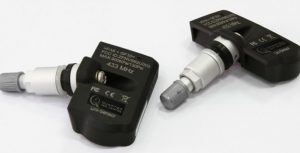
Tyre Valves
Valves and their components are ordinarily made of rubber, so they are subject to deterioration over time. Replacing them when you buy new tyres is an inexpensive way to protect your tyres, vehicle and yourself. The valve cap is also important. It’s the primary air seal and helps to keep out dust and dirt particles. You should check that your valves and valve caps are in good condition to:
- Maintain an airtight seal
- Maintain the correct tyre pressure
- Ensure longer tyre life
Wheel Balancing
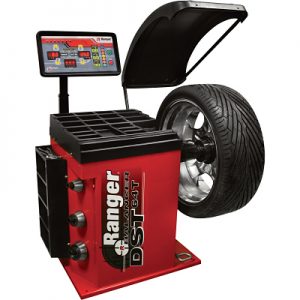
Wheel Balancing Equipment
An unbalanced wheel can cause dangerous mechanical damage. Balancing helps to prevent premature wear of tyres and eliminates vibration. It also protects the suspension, steering system and bearings of your vehicle. Have your wheels balanced when a tyre is replaced, a balance weight is moved or removed, or you purchase new tyres. You’ll know a wheel is out of balance when one area is heavier or lighter than the rest. This will cause:
- More stress on front-end parts
- Uneven and rapid tread wear
- Vibration
- Front-end parts to wear prematurely
Spare Tyre
Getting a flat tyre and discovering that your spare is also flat is a miserable experience. Inspect your spare as you would your other tyres. If you have a compact spare, the inflation pressure will usually be written on the tyre. If your car comes with a compressor or a flat repair kit in lieu of a spare, check their operation regularly. Even if you never use your spare it is still vital that you check that it is in good condition.
Check for Damage or Irregular Wear
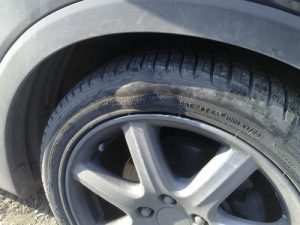
Damage or Irregular Wear on Tyres
Look after your tyres and they will look after you. Check regularly for any signs of irregular wear, any sharp objects lodged in the tread and any cuts, tears, cracks or bulges. If in doubt, ask a specialist!
Check for damage regularly:
- On all four tyres
- On both sides of the tyre
- On wheel rims (which may damage your tyres)
Tyre Rotation
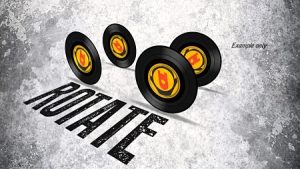
Tyre Rotation
Rotate tyres every 8,000 – 10,000 km. Visit a reputable tyre shop or garage for tyre rotation. Check your owner’s handbook for rotating sequence.
Summer Driving Safety Tips and Tricks
Summer Driving Safety Tips and Tricks
Statistics show summer is actually a riskier time to be on the road. But you might be tempted to go for a drive, either for a day trip or to go on holiday in summer. So follow our top summer driving safety tips to stay safe on the road during summer

Summer Driving Safety Tips and Tricks
Check Tyre
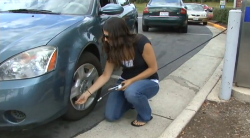
Summer Driving Tips
Checking your tires is crucial in the summer. Remember that tire pressure will increase as the outside air temperature rises. Under some conditions that increase in pressure is enough to blow the tire!. Don’t count on your electronic Tire Pressure Monitoring System to alert you to an overinflated tire, either the warning light will only get illuminated when a tire’s air pressure is too low, not too high. Check your tires on a regular basis and always make sure you check them when temperatures spike.
Also check tread depths (1.6mm for the central three-quarters of the tread and the entire outer circumference) with a 20p piece – if the outer band of the coin isn’t visible, the tyre is safe.
Oil Change
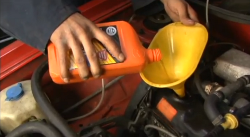
Summer Driving Safety Tips – Oil Change
Be sure to get an oil change at the end of spring. Engines need a lot of lubricant when it gets hot and old oil becomes sticky and doesn’t help an engine as well as fresh, clean oil. Most car manufacturers recommend changing the oil each time the car passes 5,000 miles but if you are going to be doing a lot of driving this summer, change it before then.
Cooling System
Your car needs to stay cool in the heat of summer, so ensure that the cooling system is in full working order. If the coolant leaks or the fan is faulty, the car could overheat. There are a few signs to look for, if you think your cooling fan might not be functioning. These include overheating while stuck in traffic, overheating with the AC on or if your AC won’t come on at all. If any of these problems are happening to you, the cooling fan could be a likely culprit!, so ensuring it’s in good working order is crucial. And at the same time, make sure your air conditioning system is regularly serviced.
Emergency Roadside Kit
Prepare an emergency kit and keep it in the trunk. The kit should include:
- First aid supplies
- Jumper cables
- Flashlight with fresh batteries
- Spare batteries for flashlight
- Roadside flares
- Basic tools
- Duct tape
- Gloves
- Bottled water
- Granola bars
Take Driving Breaks
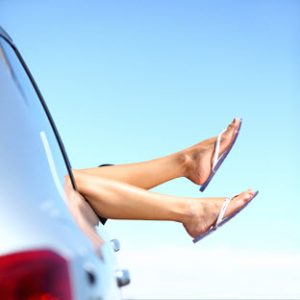
Summer Driving Tips – Driving Breaks
Heat exhaustion is a critical cause of drowsiness, which poses a significant risk to the safety of everyone on the roads. Remind drivers of the importance of staying alert and if necessary it is best to pull over and take a break. It is better to lose a few hours than lose entire days and risk injury because of an accident. To combat increased fatigue, drivers should also take frequent breaks and drink lots of fluids to avoid heat exhaustion.
Staring at the same site lines for hours is very tiring especially during summer. So taking a break helps you to freshen up. If your trip is more than 2 hours, plan a stop part way through your trip. While you’re taking your break, check your vehicle to make sure that everything is sound.
Caution Around Construction Projects
Warm weather increases road construction work. Safely navigate through construction zones, obey all signs and watch for pedestrians and work vehicles.
Match Load Rate Of Vehicle
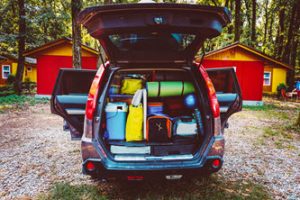
Summer Driving Tips – Load Check
Match the load rate of your vehicle with the estimated weight of your family and the luggage you’ll be packing for the trip. Excess weight makes the engine work harder and consume more gasoline. Your owner’s manual has information about the maximum weight of all cargo and passengers your vehicle can safely carry.
Also get the junk out of the trunk! Remove unnecessary items in your vehicle’s trunk – an extra 100 pounds could reduce your mileage by up to 2%.
Keep A Safe Distance
Summer traffic is unpredictable. Traffic flow can suddenly stop and if you’re too close to the car in front of you, you could end up in a rear-end accident. When hauling a heavy load of any kind it is important to brake sooner than normal, but this is especially important in the summer as fleets’ normal traffic patterns are interrupted by construction zones, tourist season and families and children who are out of school.
Happy and Safe driving!!!
Eid Mubarak
Eid Mubarak to all

Eid Mubarak Wishes
Ramadan Mubarak to all
Wishing everyone a Happy Ramadan
May the spirit of Ramadan illuminate the world and show us the way to peace and harmony.

Ramadan Mubarak – PioneerPartsStore.com
Ramadan 2016 Special Offers

Ramadan Special Offers
Ramadan 2016 special offers on selected original spare parts, mainly on Japanese brands. Discount of 25% on selected spare parts.
Starting date: 01 June 2016
Ending date: 10 July 2016
ISO Certification
It gives us immense pleasure and proud to inform you all that recently we have been awarded ISO 9001 certification for maintaining quality management system.




